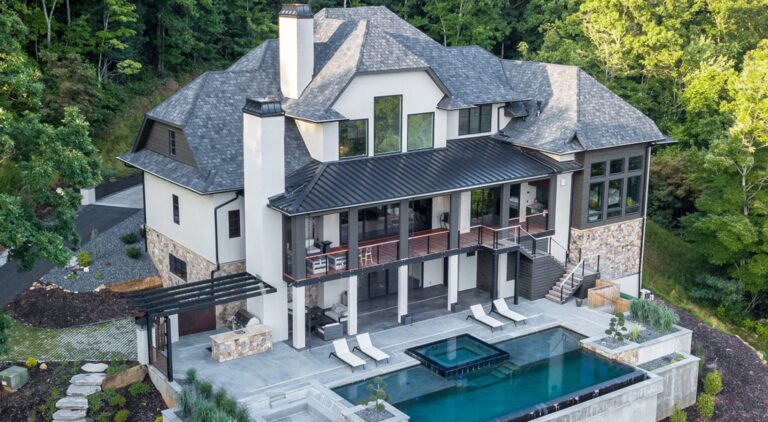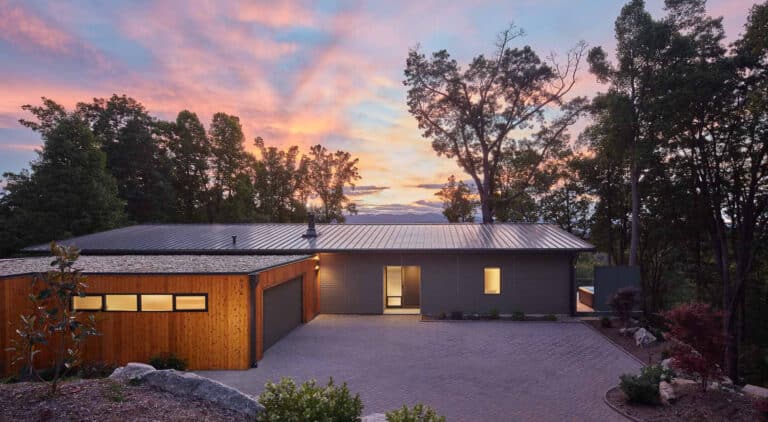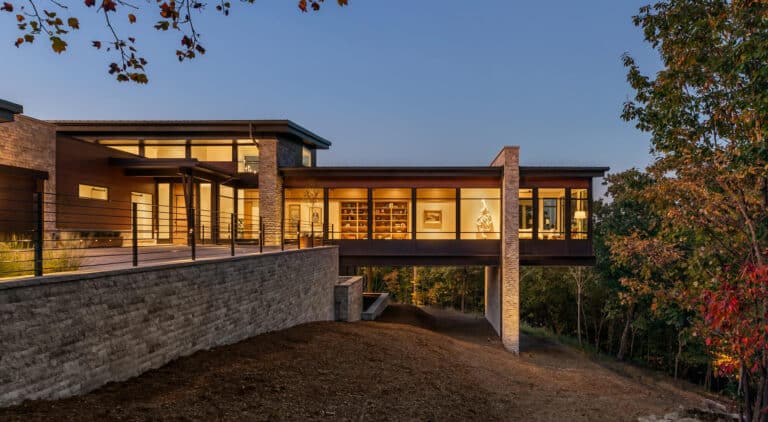Tudor Revival Homes: Where Does This Architectural Style Come From, and What Are Its Trademarks?
Since the early 20th century, Tudor Revival homes have been a popular style of residential architecture in the US, and especially in upscale areas like Asheville, NC. Marked by dark timber and textured facades, natural materials and palettes, tall windows, pitched roofs, and cozy interiors, this sturdy style remains a common choice for both mansions and cottages along the east coast and throughout the Midwest.
Tudor revival homes are beloved for their “fairytale” Old World charm, often created by arch doorways, stone facades, and quirky asymmetry. Pre-World War II Tudors occasionally come on the market, but these distinctive homes are rarely built on spec. If you love the characteristic half-timber look of the Tudor, you’ll want a specialty custom home builder in Asheville, SC.
Custom building allows you to choose your favorite Tudor elements—such as the wide-open great hall, the deep-set hearth and large fireplace, or the diamond-patterned leaded windows—and forgo the elements you may not be as fond of. Custom building also allows you to take advantage of the most modern building science, incorporating built-in luxury appliances and energy-efficient design and material choices.
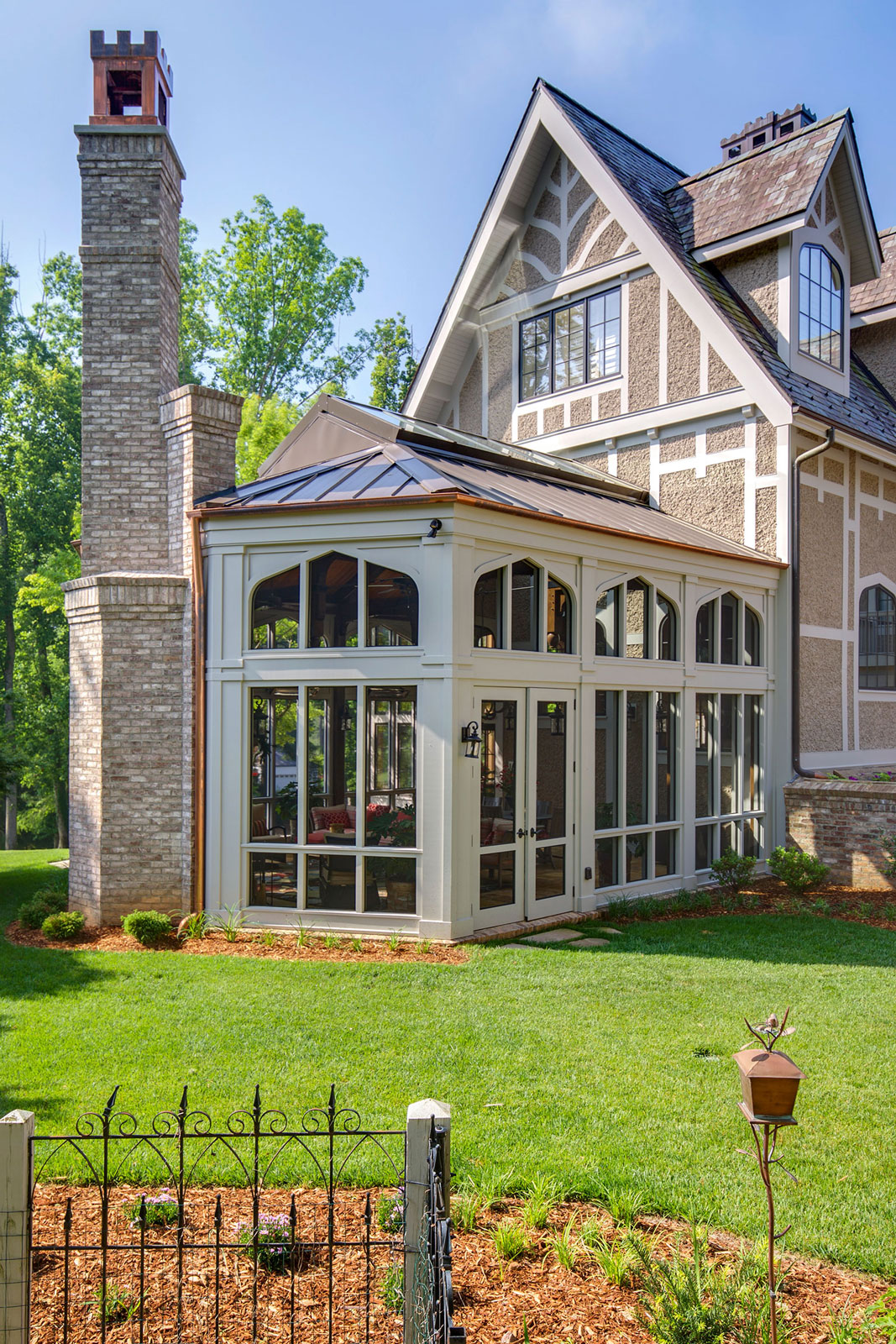
Where does the term “Tudor” come from?
“Tudor” refers to the ruling family of England from 1485 to 1603. Some of history’s most well-known British royalty, such as Henry VIII and Elizabeth I, were Tudors. For much of the Tudor period, England was economically prosperous and peaceful, with flourishing arts and culture.
These days, the architectural term “Tudor” encompasses many hallmarks of late-medieval European architecture, with a footprint that extends well beyond England. Structural characteristics, such as half-timber construction (when the home’s frame is visible and filled in with non-weight-supporting material), were common not just in England, but in France and Germany. Tudor Revival, or “mock Tudor,” mixes an array of influences, pulling arches and oriel windows from Islamic architecture, curved gables from Flemish Renaissance design, and hammer-beam roofs from English Gothicism.
When did Tudor architecture come to the US?
Tudor Revivalism was a trend in the UK before becoming one of the most appreciated home styles in the US in upscale neighborhoods during the early 20th century (1920s and 30s). Before that, it was so popular with the Buckinghamshire arm of the Rothschilds that the term “Rothschild Tudor” became common vernacular throughout England. Rothchild Tudor described the cottages and mansions sprinkled across the prominent family’s vast estates.
Following World War I, there was a nostalgia for rustic, wholesome values throughout Europe and the US. This nostalgia manifests in a fresh appreciation for “cottage style” architecture, such as the hand-hewn beams and natural materials of Tudor homes. This style was employed in both grand mansions (hinting at European aristocracy) and modest suburban homes. Entire suburbs of London, as well as of New York and New Jersey, were soon flush with Tudor Revival.
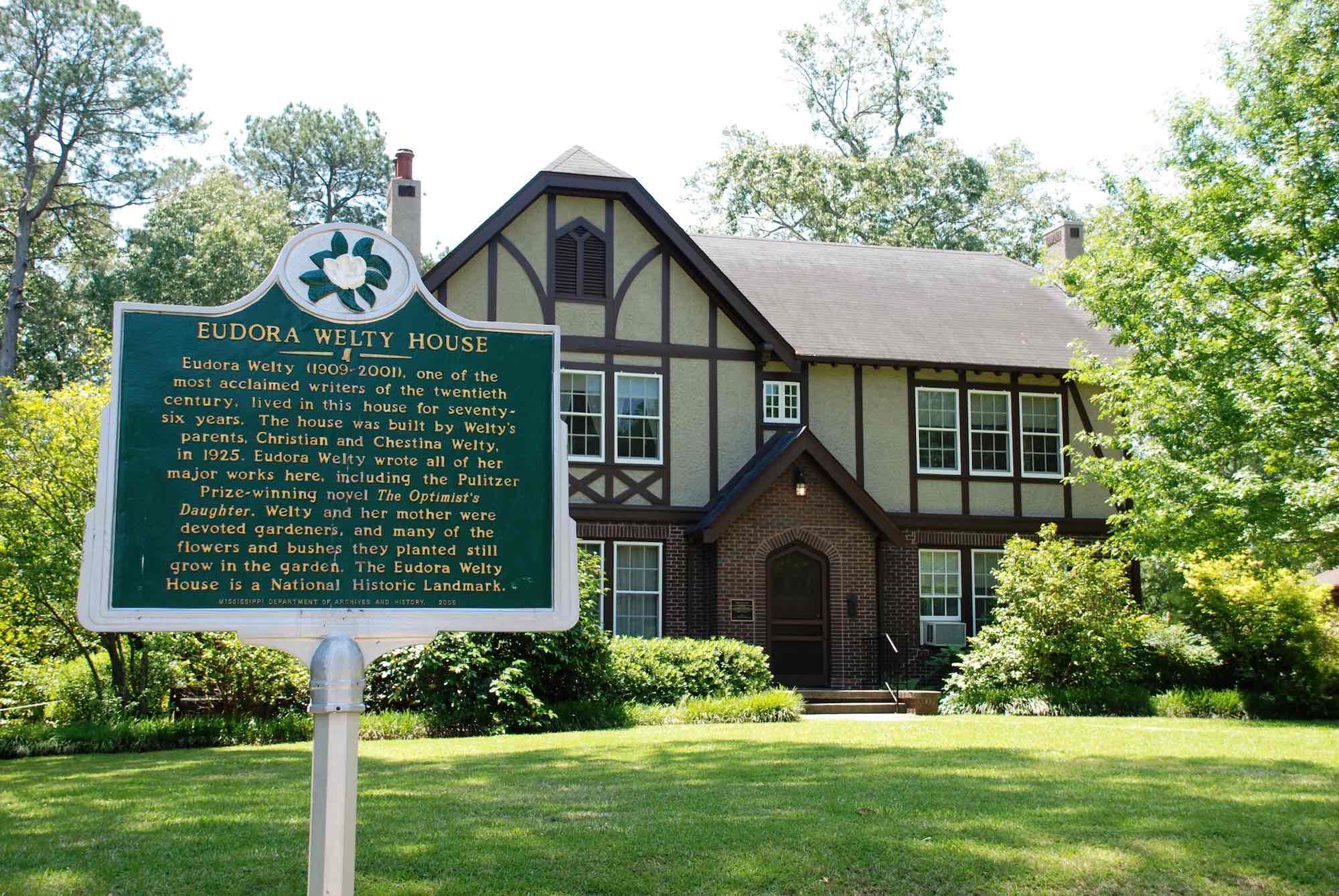
Tudor was the most popular new home style in America in the 1920s and 30s and experienced a resurgence again in the 1970s and 80s. Tudor homes can be found in the Northeast and Midwest primarily, although there are pockets of Tudor-heavy neighborhoods throughout the South. (The late Mississippi writer, Eudora Welty, grew up in a grand Tudor home in Jackson.) They are prominent throughout western North Carolina, particularly in the Asheville area.
What are some characteristics of Tudor Architecture?
Tudor is marked by multiple, visible chimneys and towers, brick or stone facades, and tall, multi-pane windows. Half a millennium ago, the English and French upper class built palaces and mansions in this style. Meanwhile, peasants built cottages with visible, weight-supporting beams, filling in the spaces with a woven-stick base and a mixture of clay, sand, and straw.
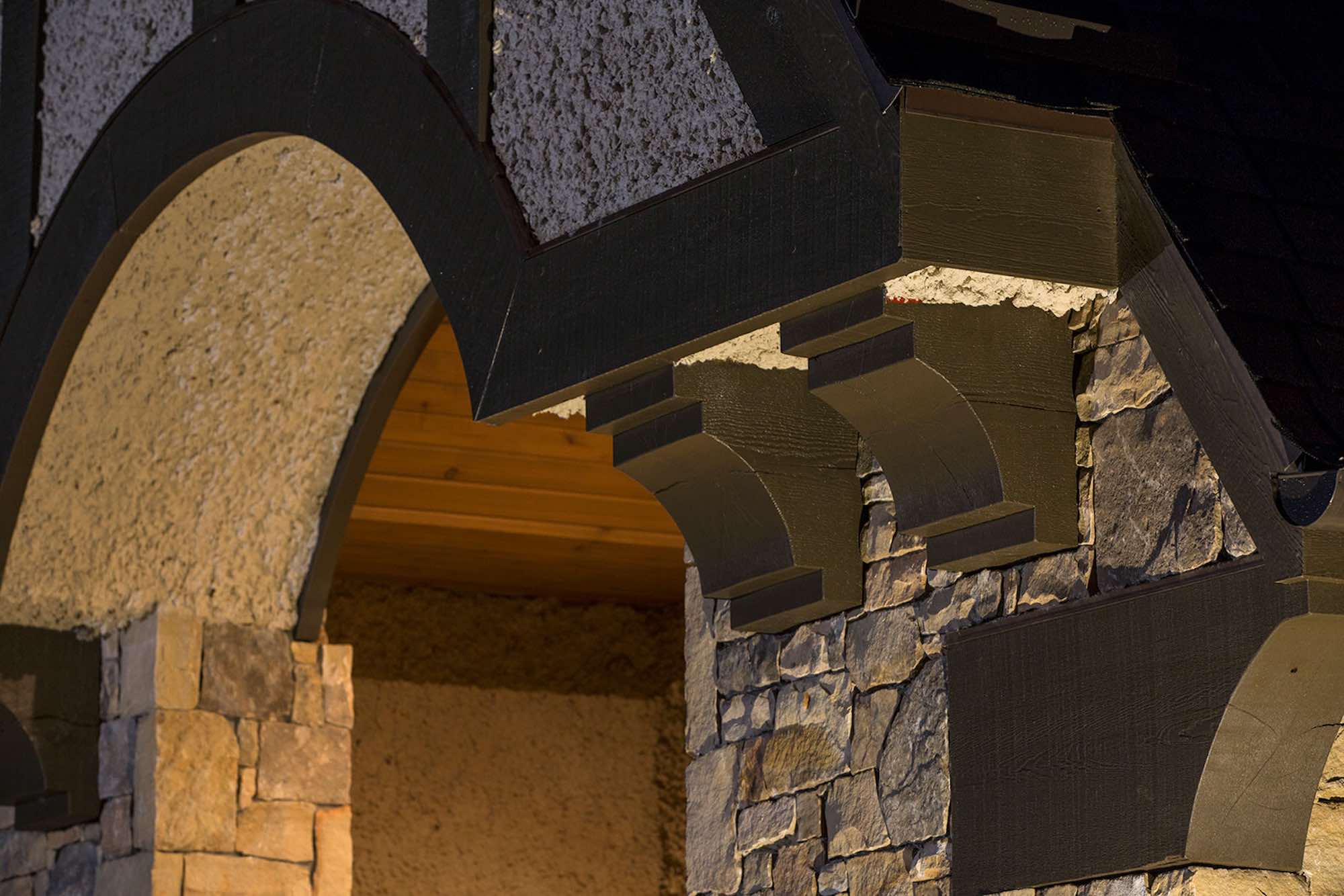
Other Tudor characteristics include hand-hewn timber staircases, visible ceiling beams, arched doorways and windows, and vaulted ceilings. Dormer windows and overhanging (cantilevered) upper stories, both originally designed to save space on crowded medieval urban streets, are also common motifs.
Inglenook fireplaces, set back from the main room within a large sitting area, add to the overall coziness of these traditionally attractive homes, as do wooden wall panels, built-in shelves, and other interior design elements that illustrate how the Tudor Revival movement overlapped and intersected with another rural-nostalgia movement in America in the early 20th century, Arts & Crafts.
Where will you find Tudor homes in Asheville?
Asheville’s Grove Park Historic District has some excellent examples of Tudor Revival architecture. Most of the homes in Grove Park were constructed between 1908 and 1938, and some were designed by prestigious architects, such as Richard Sharp Smith. Smith came to Asheville in 1888 to help design the Biltmore estate. He remained in the city and designed at least eight homes in Grove Park, including several Tudor Revivals.
In Asheville, the style was well-liked among the business elite. J.A. Groves, president of Groves Wholesale Produce, built a Tudor Revival cottage in 1926. Sigmund I. Blomberg, owner of the Leader Department Store; W.C. Shuey, president of the Western Oil Company; and W.F. Humphries, president of the Blue Ridge Grocery Company and the Amboy Land Company, all custom-built Tudor Revival residences in the early 1900s.
In 1930, new architecture in Asheville ceased as banks failed. But by 1935, construction had resumed, and Tudor homes were prevalent among the fresh crop of residences. Many of these homes are visible along Kimberly Avenue and Kimberly Knoll Road, near the Grove Park Inn Country Club.
Tudor homes can also be found in the Biltmore Forest neighborhood. The actress Andie MacDowell sold Tudor Rose, the home she had custom-built in the Biltmore Forest, for $3.6 million. After the sale, Bluestone Construction remodeled the Andie MacDowell home for the new owners and added a sun conservatory pictured below.
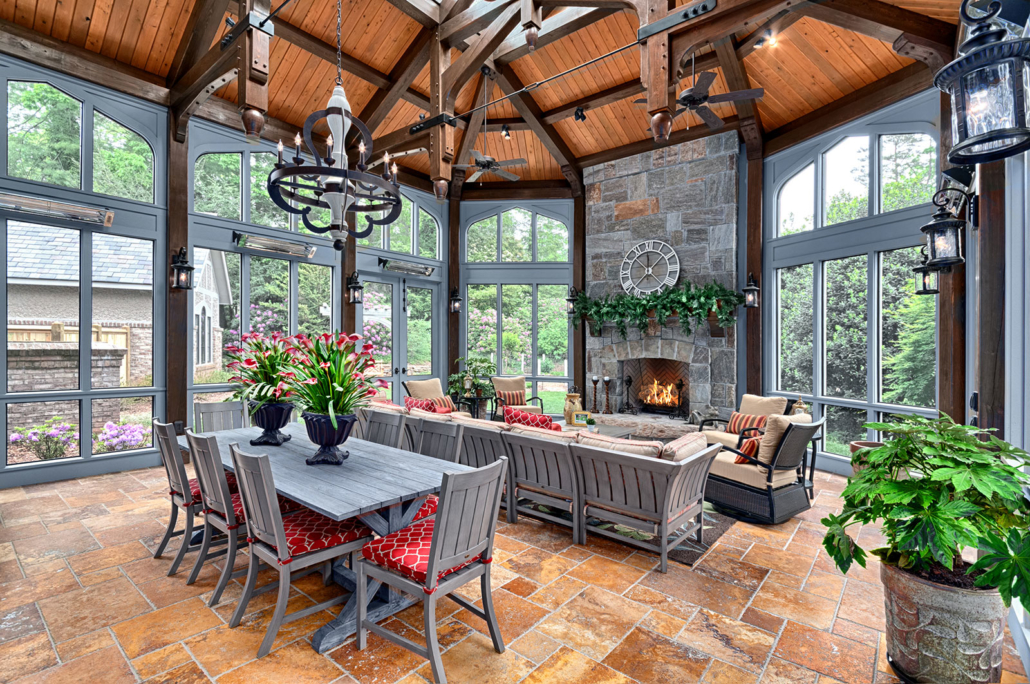
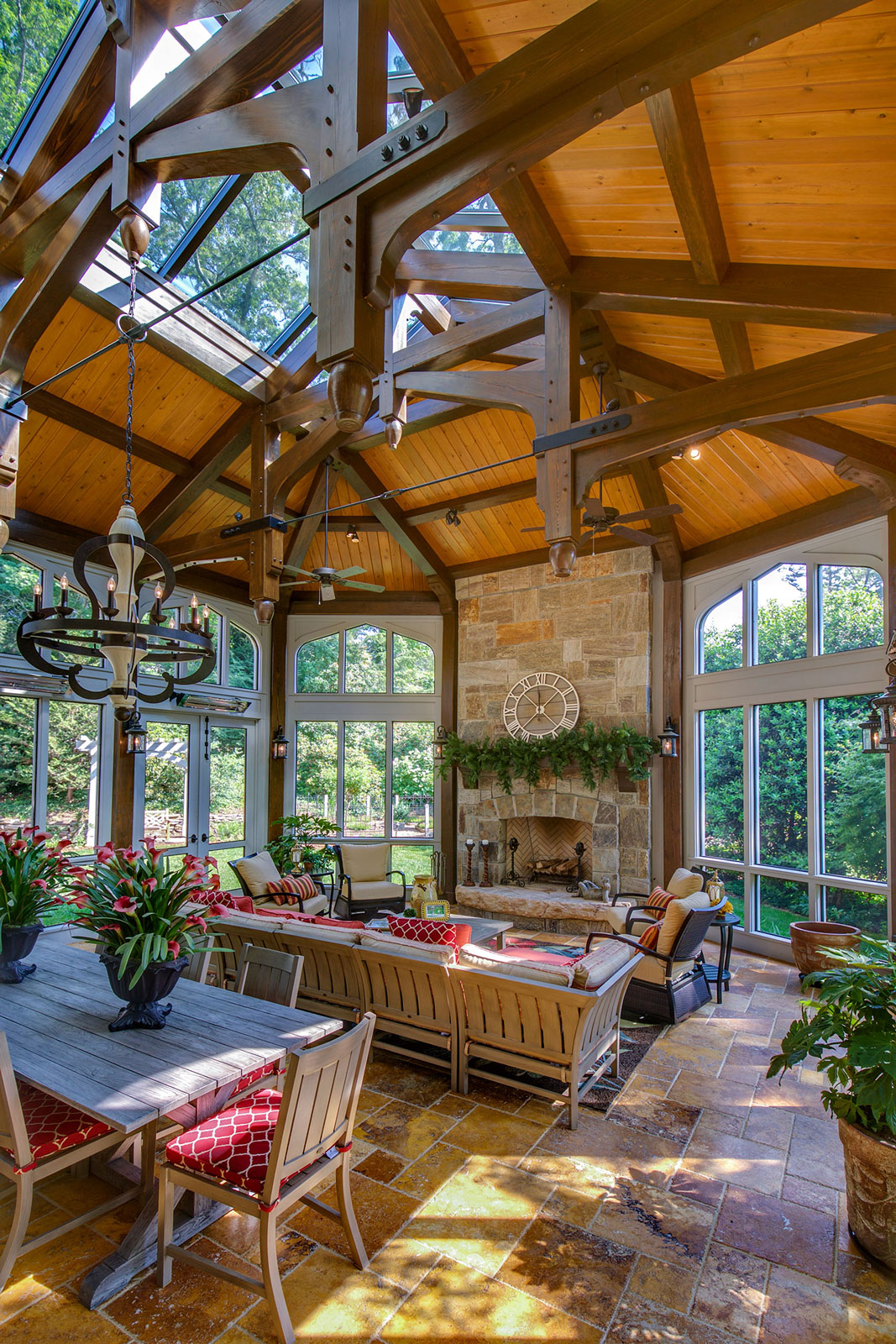
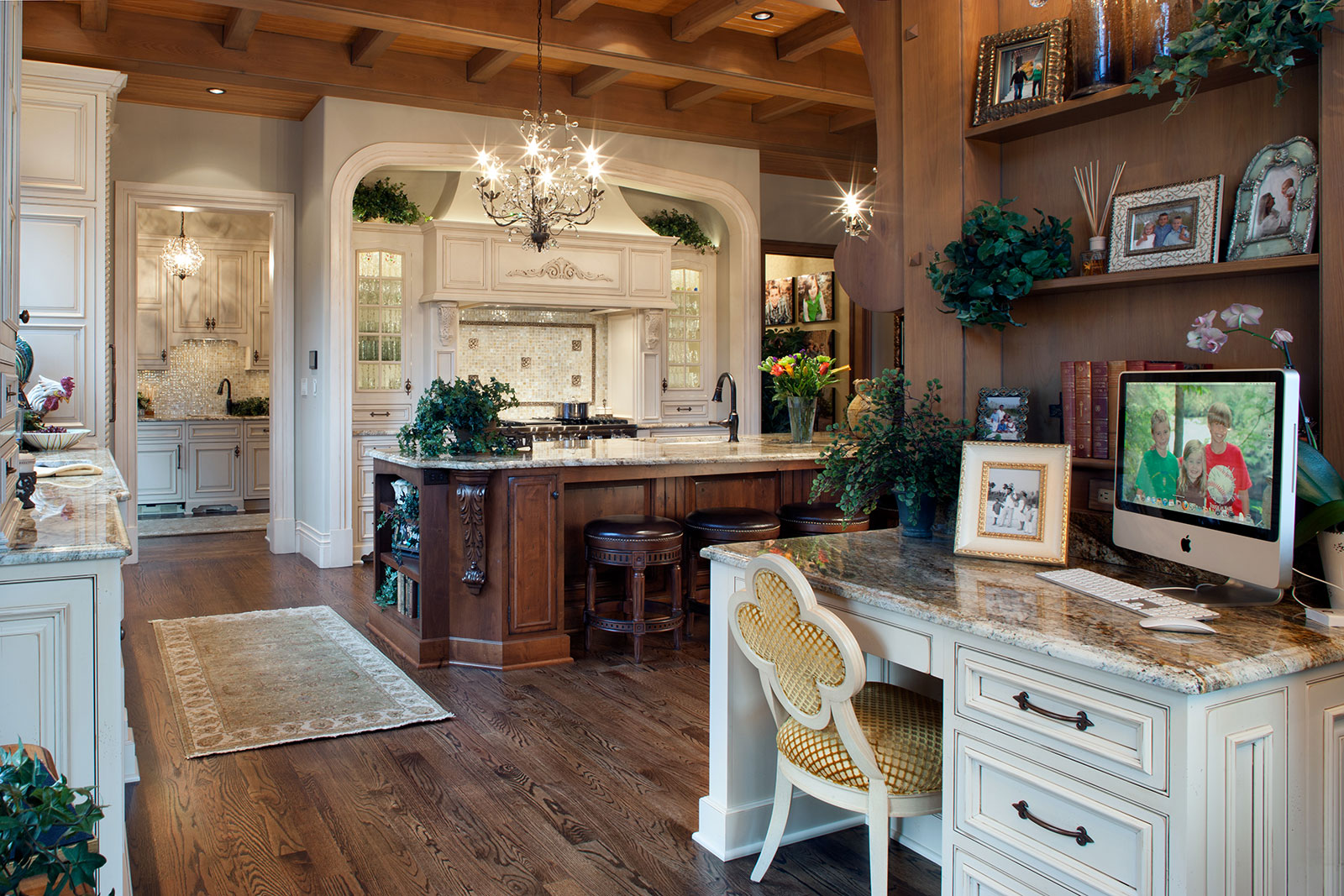
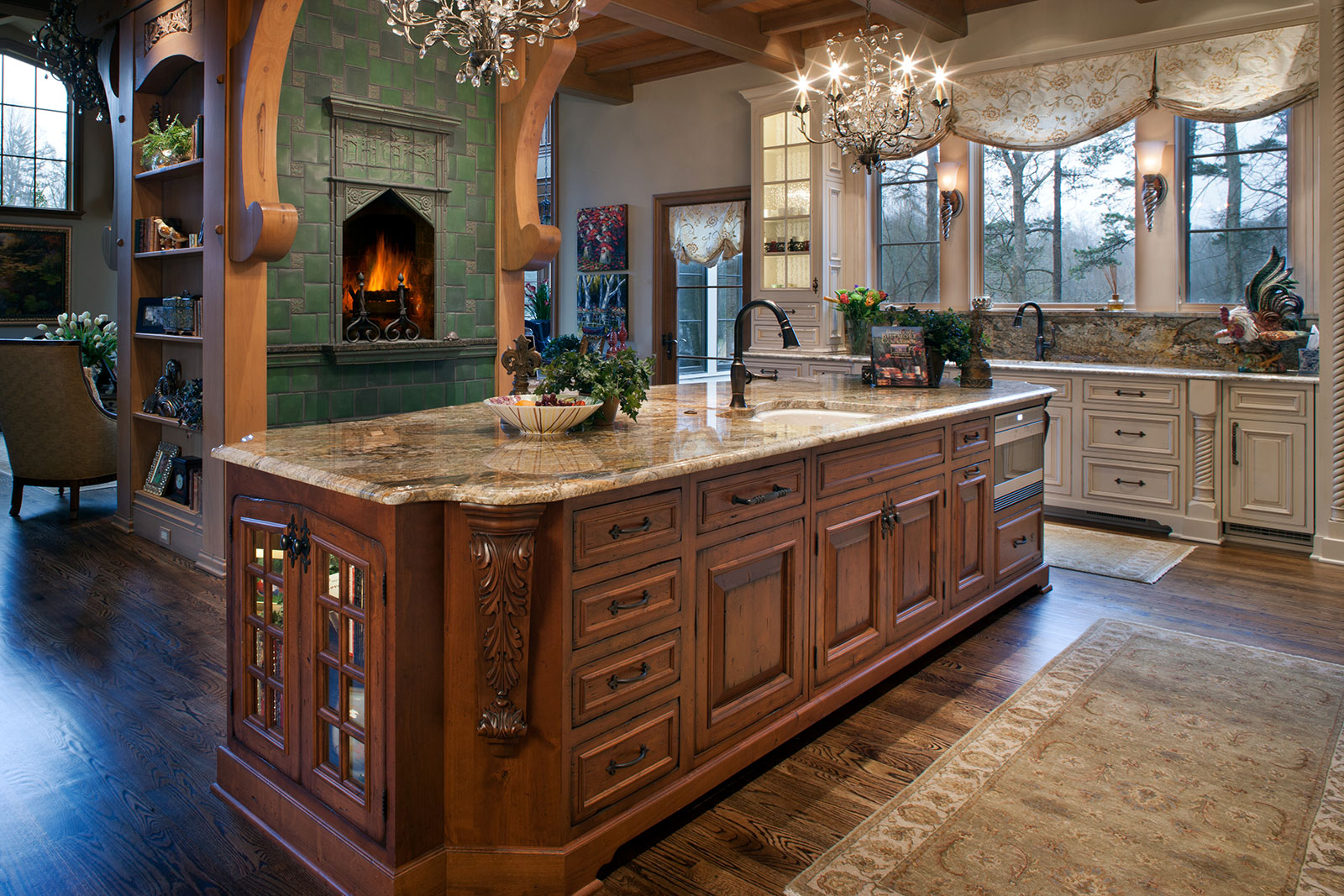
Tudor homes are well-suited for the rugged landscape surrounding Asheville. They privilege natural materials abundant to the area, such as stone, slate, iron, and wood, and they stand up well to the elements. Their emphasis on intimate indoor spaces makes them comfortable throughout Asheville winters. In fact, Tudor homes are historically focused on interior spaces.
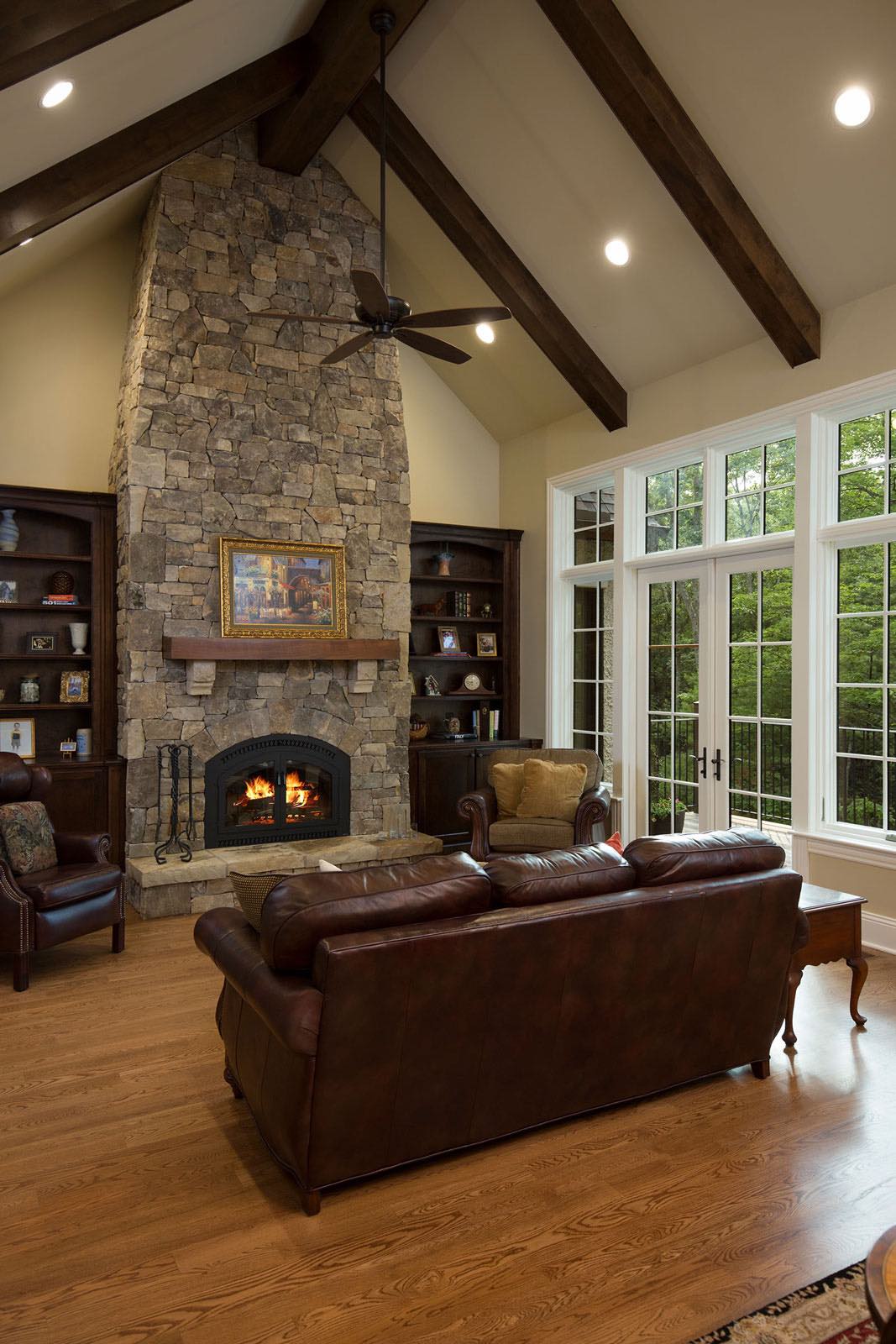
Custom-building your own Tudor can allow you to incorporate indoor-outdoor spaces, such as sunrooms and screened porches, despite the fact that these aren’t traditional Tudor design elements. These additions allow you to take advantage of Asheville’s pleasant, moderate weather. Traditional Tudor elements can be incorporated to tie the update in with the overall style, as illustrated by this big stone fireplace on this screened-in porch.
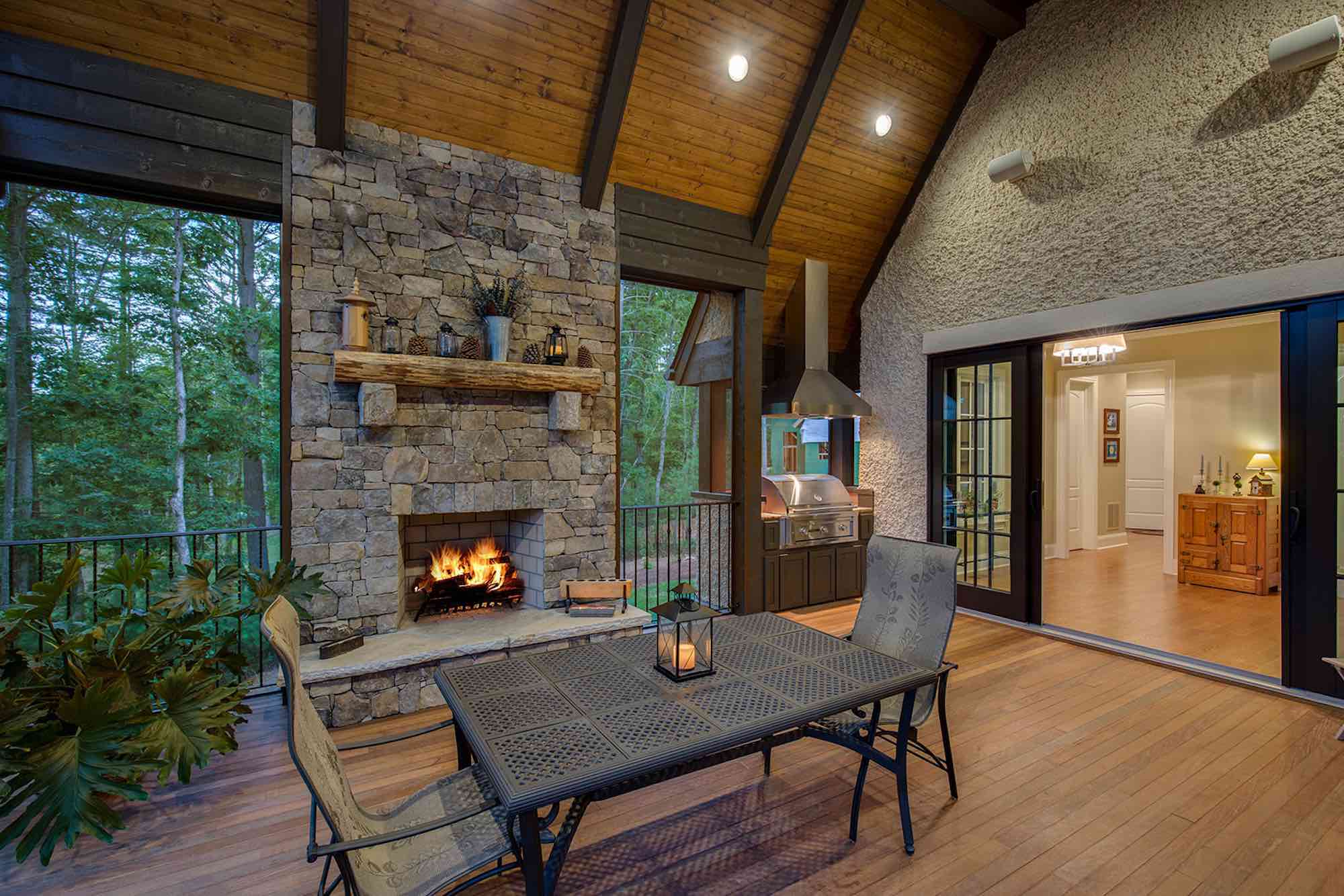
At Bluestone Construction, we share your appreciation of natural materials, fine craftsmanship, and attention to detail. This Tudor Revival, which we built in the Biltmore Forest, incorporates many of the traditional markers of the style—curved entryways, dark wood, exposed beams and joints, iron fixtures, and a stone and half-timber facade.
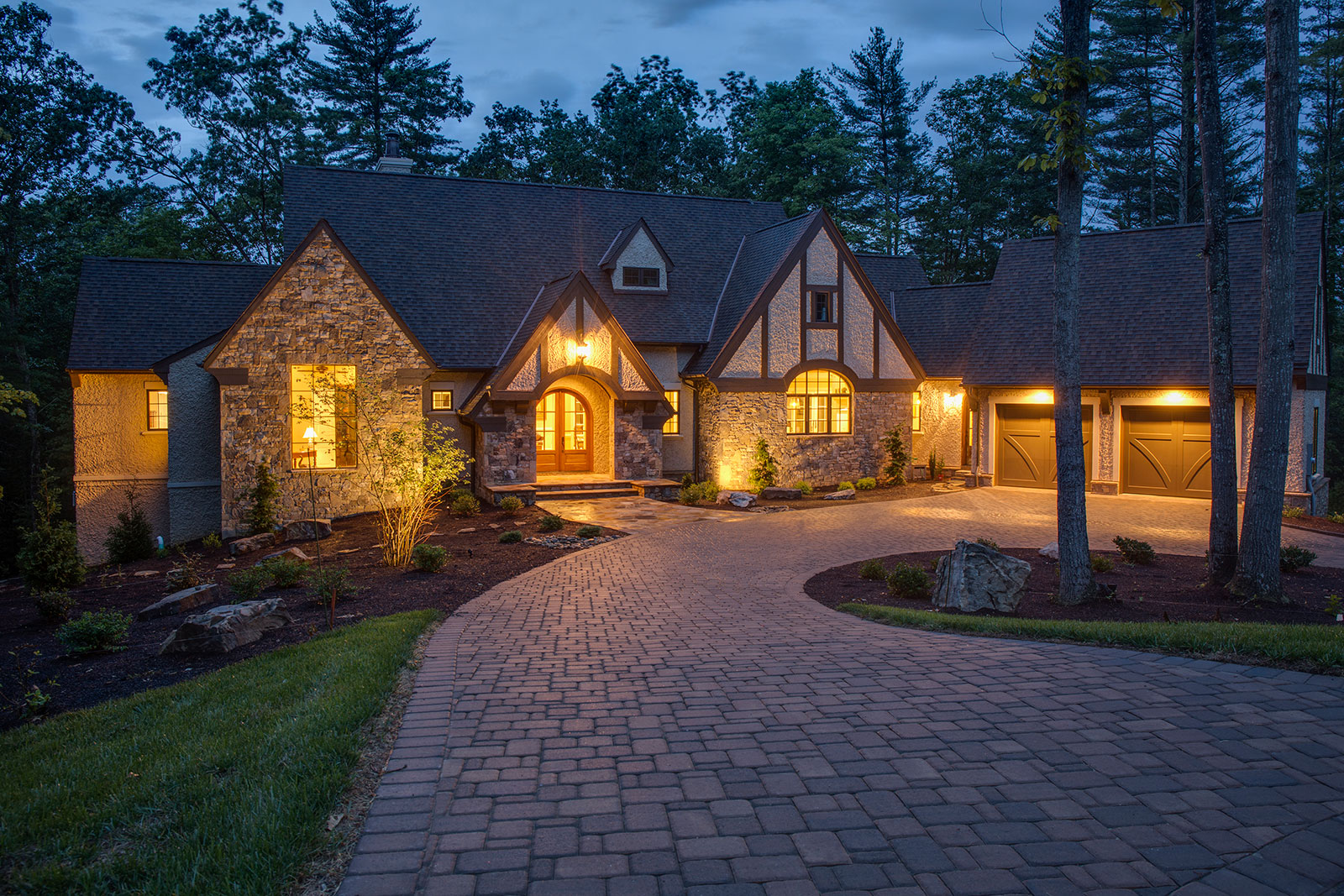
But unlike vintage Tudor Revival homes, it offers an entirely modern kitchen, amazing floor-to-ceiling windows, and a big screened back porch with a built-in BBQ and vaulted ceilings. It’s a lot of fun for us to customize your home with the exact details you love that will help you enjoy it best while ensuring that the overall design is coherent and any mix of styles is well-blended.
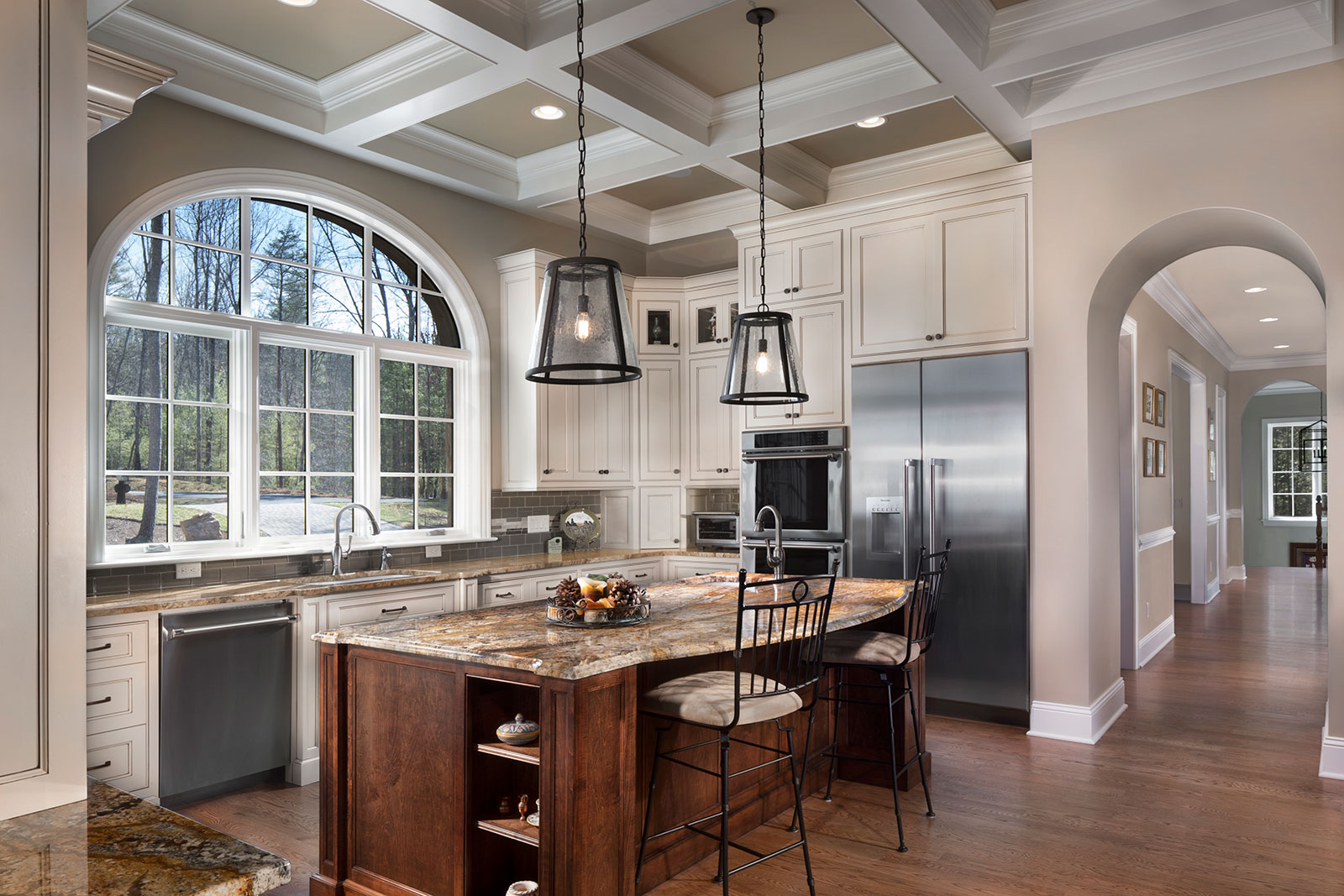
Interested in building a custom Tudor home in Asheville? Schedule a meeting with us to discuss the details. We are happy to help.

